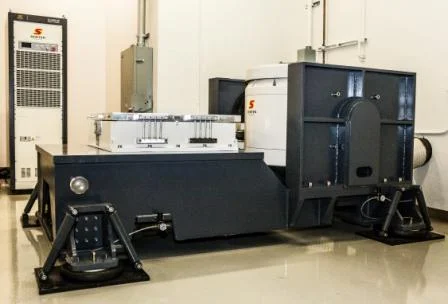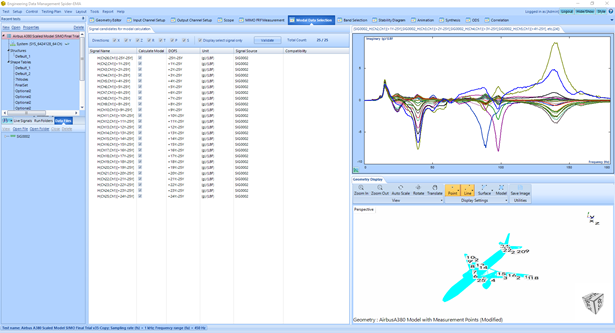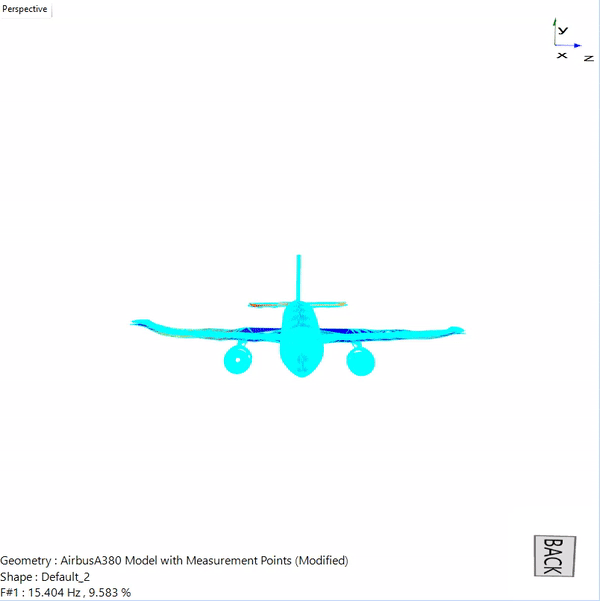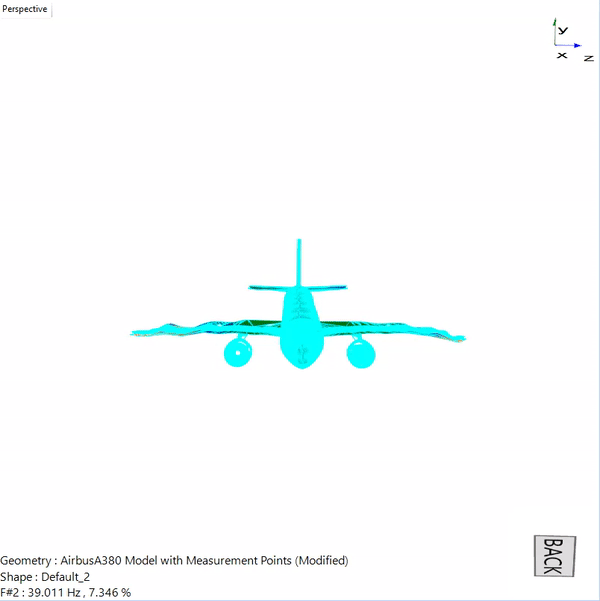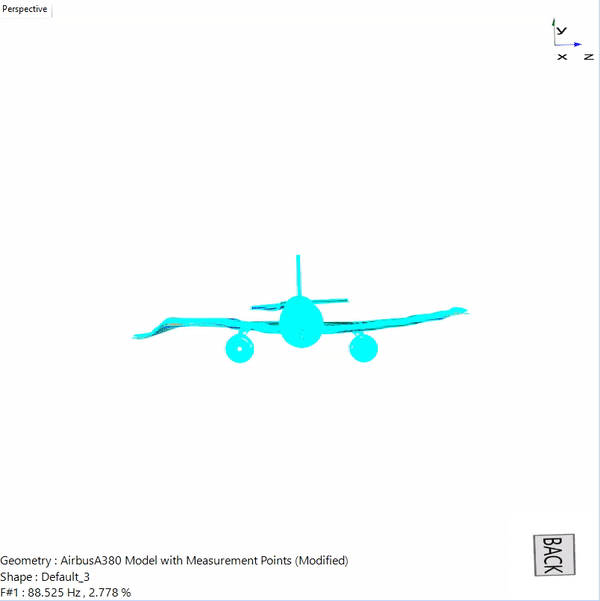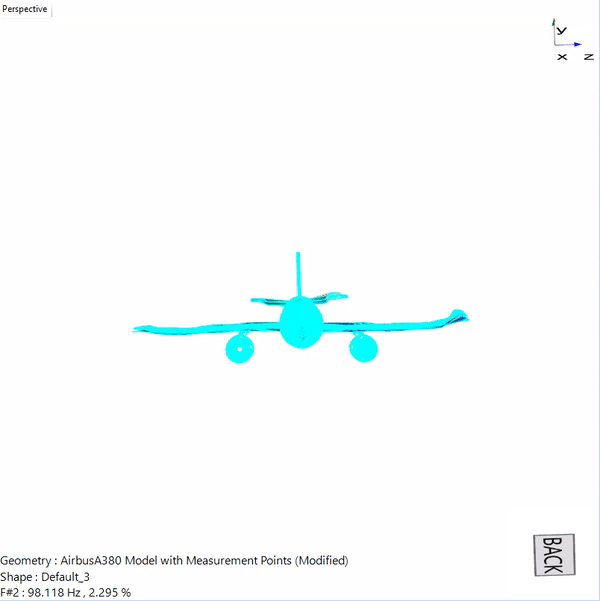Ground Vibration Testing (GVT) includes the modal analysis of an aircraft and its sub-assembly components to analyze and detect any changes to their structural properties. The modal parameters determined through testing are then used to validate the analytical models. The modal characteristics are also used to predict the flutter of the aircraft in order to create a safe flight envelope before flight operation.
Multiple accelerometers are mounted on the aircraft and multiple modal shakers are used to excite the aircraft to obtain multiple-reference frequency response functions (FRFs). A high-channel count data acquisition system helps users efficiently process high channel test datasets. Several output excitation types (such as Random, Sine etc.) can be used for Multiple-Input-Multiple-Output (MIMO) modal tests.
A modal test of an aircraft is usually carried out in a single run to capture the response of entire assembly in one shot. A mesh grid with the measurement points is laid out and the geometry model (usually obtained from FEA or CAD model) is imported into the EDM Modal software.
The FRFs obtained between the excitation and the response points are overlapped to observe the dominant peaks in the desired frequency range. The imaginary part of the FRFs can also be overlaid to notice the phase relationship between the measurement DOFs.
Post-processing this data to curve-fit the measured FRFs assists in acquiring the natural frequencies, damping ratios and mode shapes of the complete airplane assembly.
Good correlation between the experimental and FEA test results helps users validate the aircraft assembly and certifies it for other tests such as Normal Mode testing, etc. These tests declare that the aircraft is safe for flying.
For more information about carrying out Modal testing and analysis in EDM Modal, please visit https://www.crystalinstruments.com/edm-modal-testing-and-analysis-software
For any questions or queries, please contact us at info@go-ci.com.

